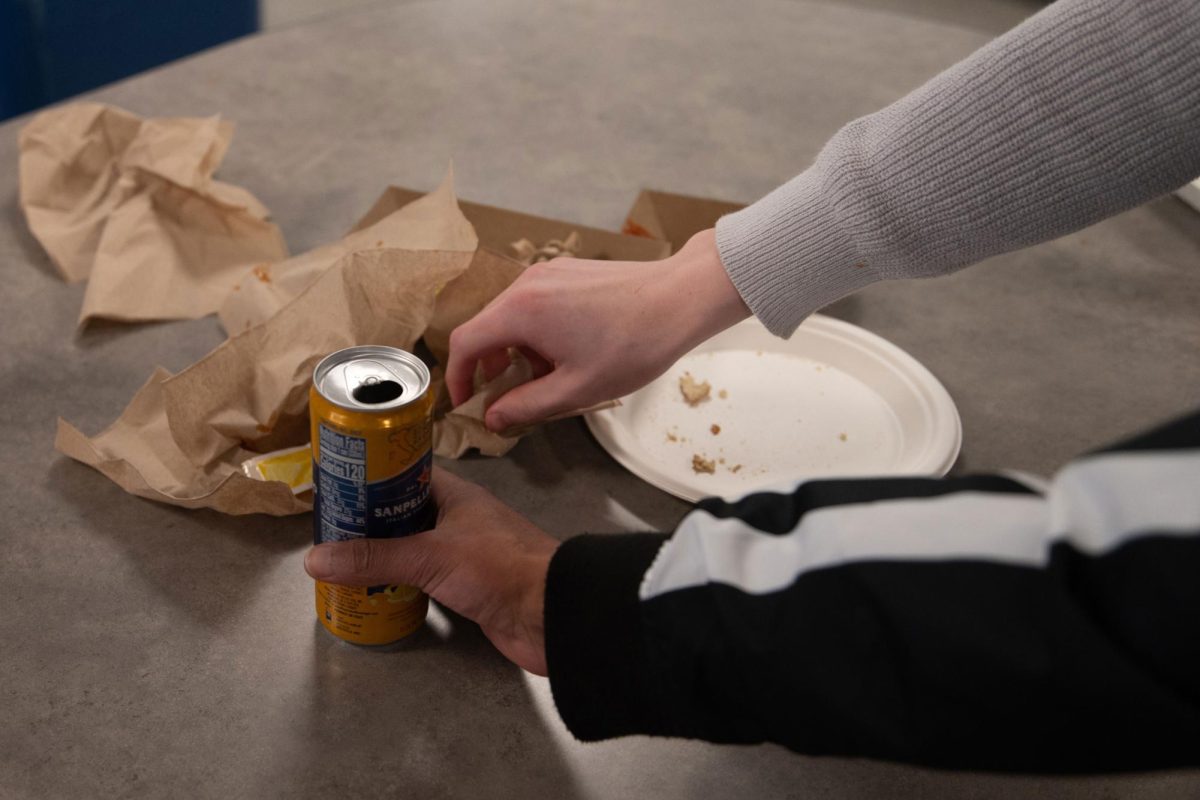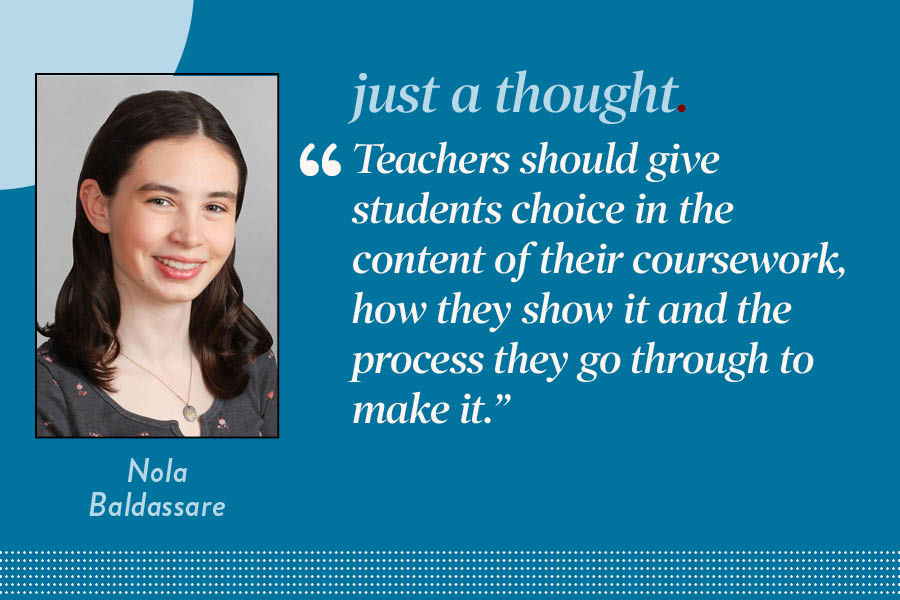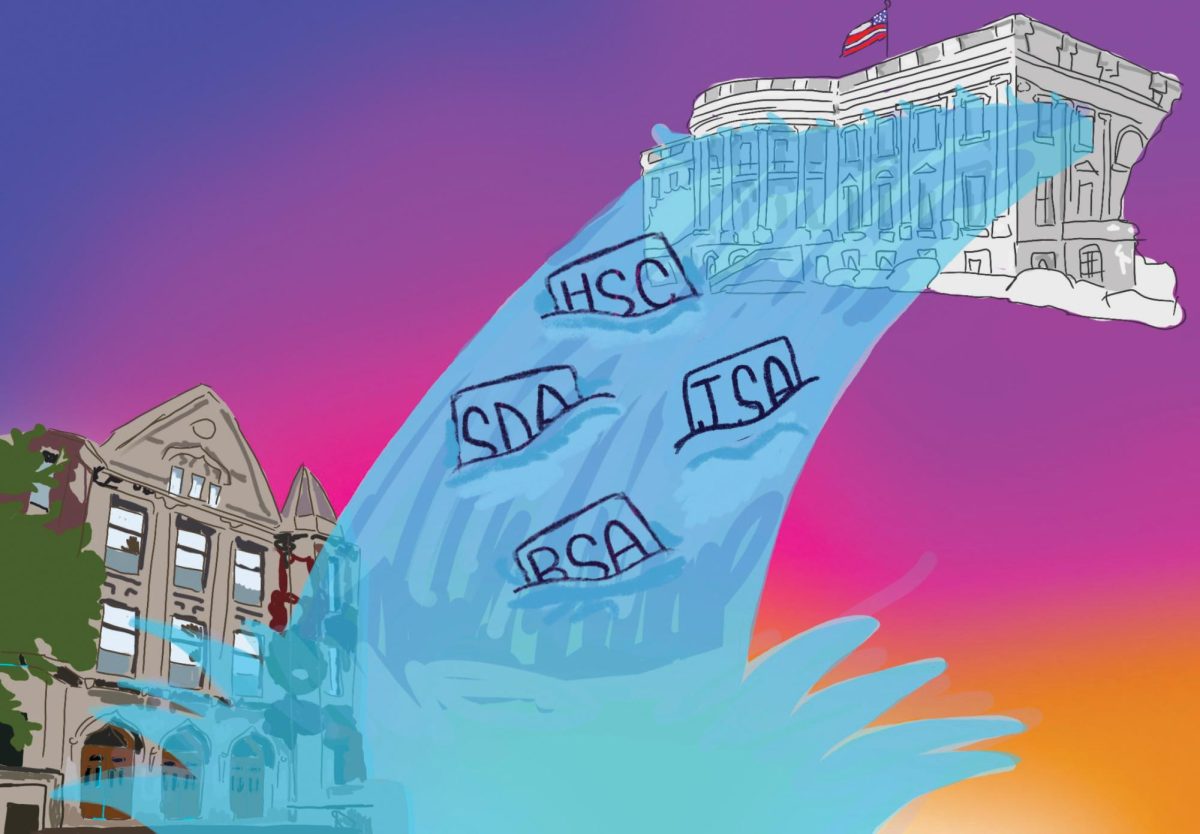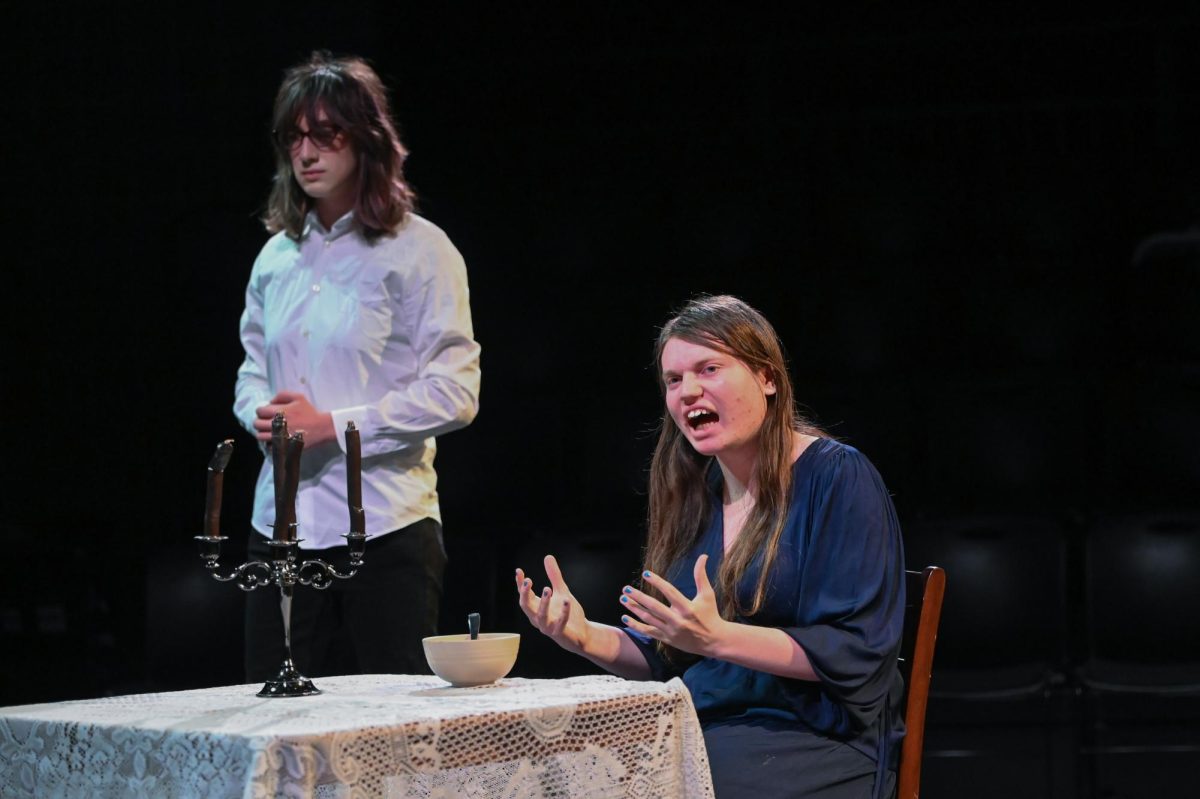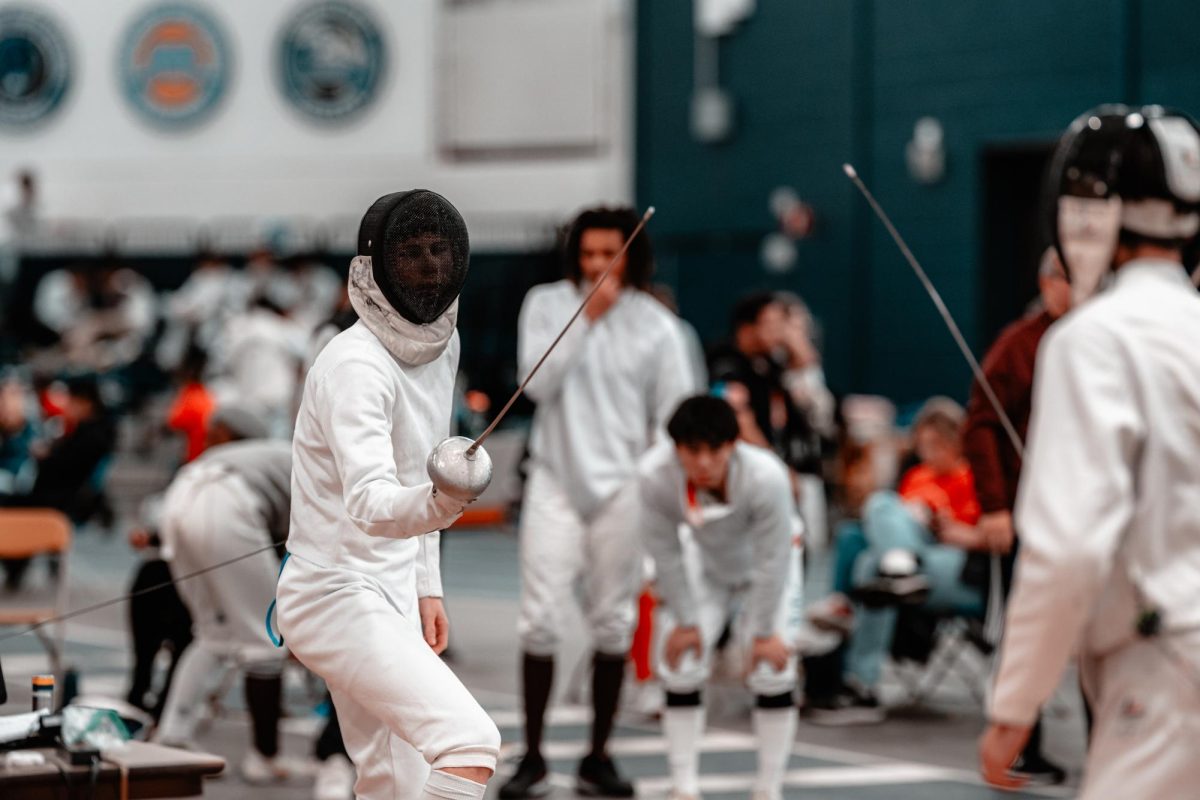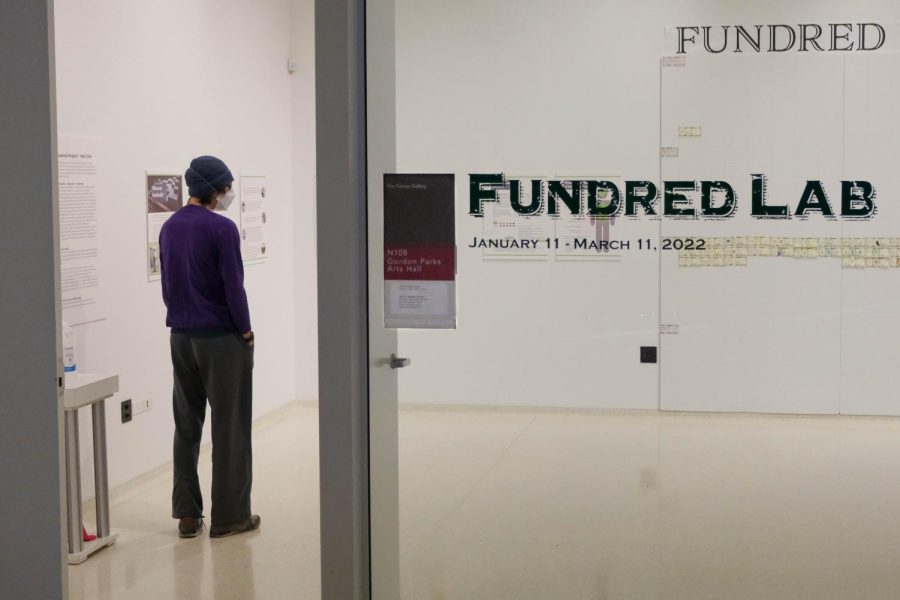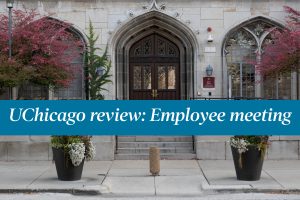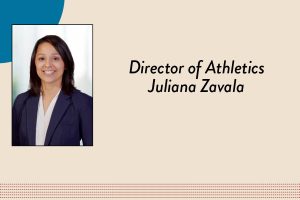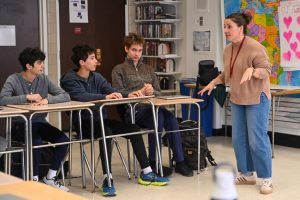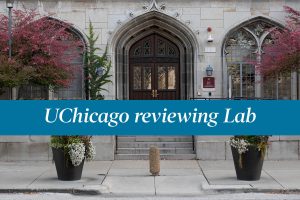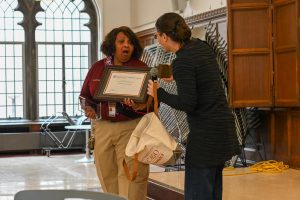‘The Fundred Project’ utilizes art to raise awareness on lead poisoning
The Corvus Gallery in Gordon Parks Arts Hall is featuring ‘The Fundred Project’ up until March 11.
January 27, 2022
The latest feature in the Corvus Gallery provides students an opportunity to use art as a tool to spread awareness about lead poisoning. The Fundred Project will be featured in the gallery inside Gordon Parks Arts Hall until March 11.
The Fundred Project was created in 2006 by Mel Chin, a MacArthur Award-winning artist, in the aftermath of Hurricane Katrina. While in New Orleans, he discovered that 30-50% of inner city children had lead poisoning. The Fundred Project revolves around the idea of participants creating a “Fundred,” a unique picture drawn on a blank “Fundred dollar bill.”
Any Fundreds submitted before the spring of 2022 will be transported through an armored truck to the permanent Fundred Reserve in the Brooklyn Museum in New York. For Mr. Chin, the most important part of these bills are how they give children and underrepresented groups a voice through their unique Fundred.
“What’s invisible is also your voice if you were 7 years old. And then what’s visible to our country and the world, that’s largely about capitalism, is money,” Mr. Chin said in an interview. “So by tying in what’s visible and appreciated, connecting with the idea of your voice, maybe it can make a difference.”
The Fundred Project aims to increase awareness of and eliminate the threat of lead poisoning. According to Mr. Chin, children are being poisoned in the environment they live in, and those who live in low-income areas are hit the hardest. Thousands of children are exposed to lead in water, dust, air and soil, causing learning disabilities, nervous system and kidney damage, and other physical issues.
Additionally, houses built before 1978 may be lined with lead paint, which can have easily digestible, and invisible, lead dust. The project has brought necessary attention to the issue of lead poisoning and provided ways for children to reduce exposure to lead.
“It’s not the big lead flakes either; it’s the dust. It’s the particles in the water. So particles in the soil that you can’t see. So [lead poisoning] can happen when you’re a kid,” Mr. Chin said.
In addition to spreading awareness to people at risk for lead poisoning, the Fundred Project has received attention from Congress, which he believes represents everyone who has contributed to the project.
“We’ve met with Speaker Pelosi,” Mr. Chin said. “We’ve met with individual representatives, but what the project did over the years is to bring people who have drawn Fundreds from these neighborhoods to come to D.C. to meet the representatives.”
Mr. Chin is confident that taking the Fundred Project to Washington, D.C., will encourage lawmakers to possibly create policies to combat lead poisoning.
“It’s going to take some really big policy decisions,” he said. That’s why we focused in D.C. It’s going to take ways of making the houses remediated in a proper way.”
Mr. Chin believes the impact of the Fundred Project lies in its ability to join the voices of Americans and represent them.
He said, “[The Fundred Project] is not me, but represents the people in America, the kids, adults that contributed to the project.”





